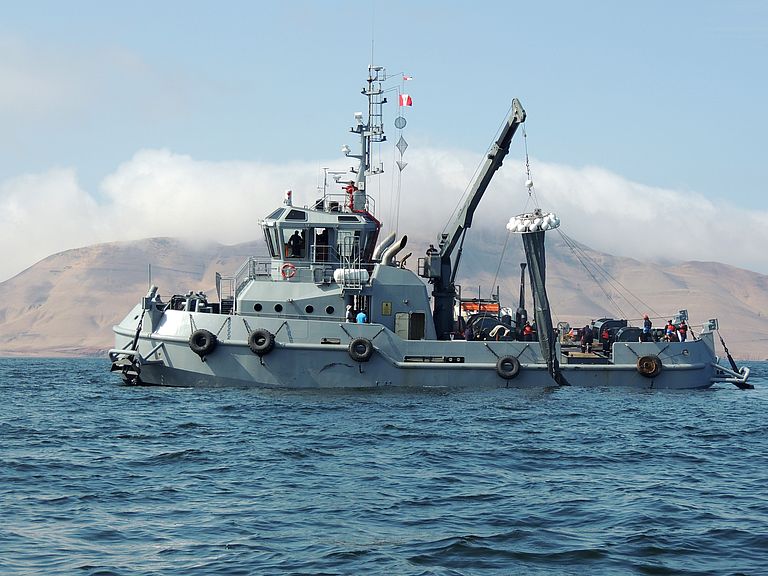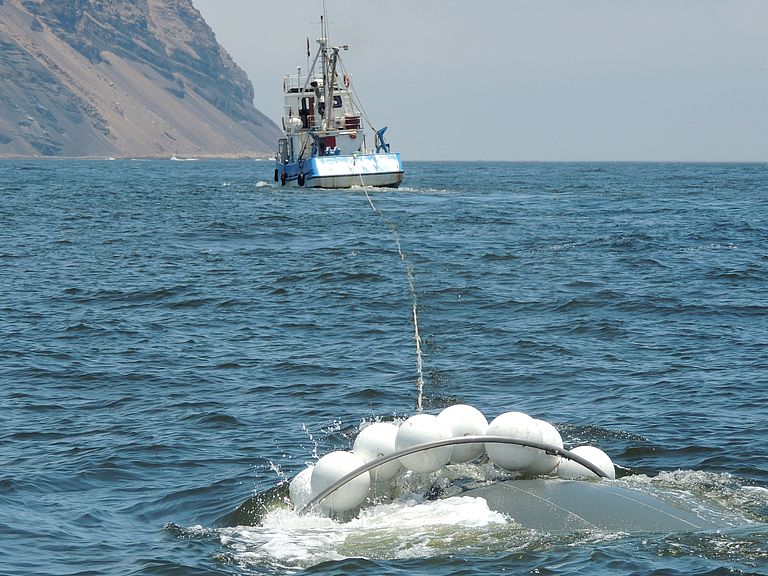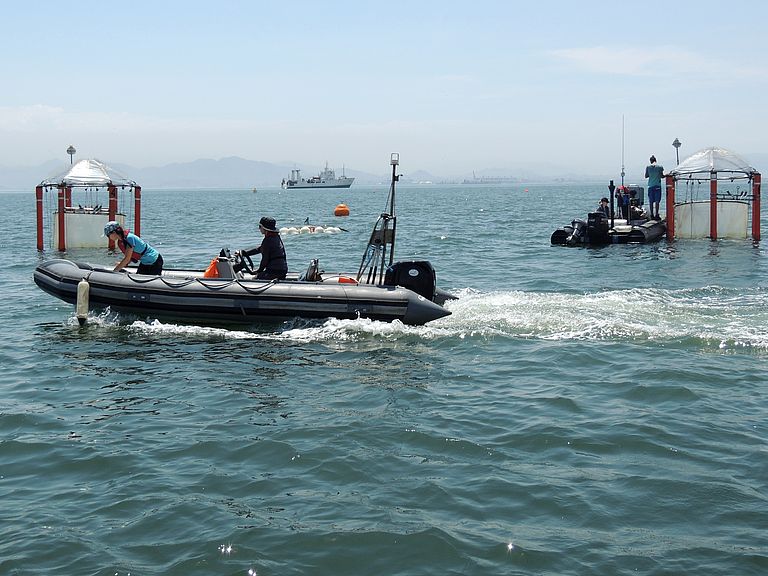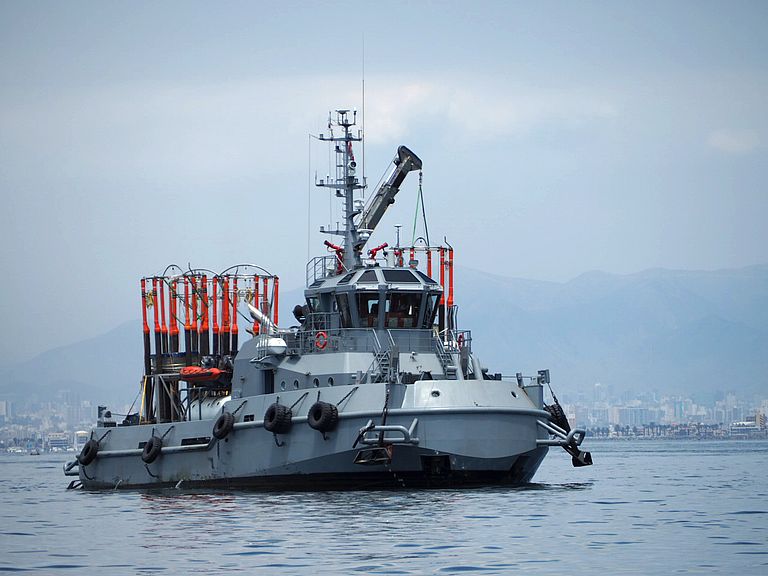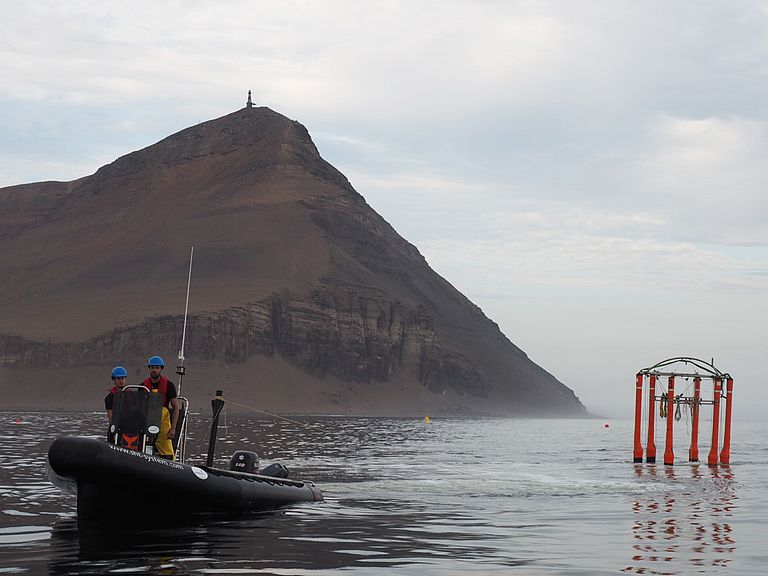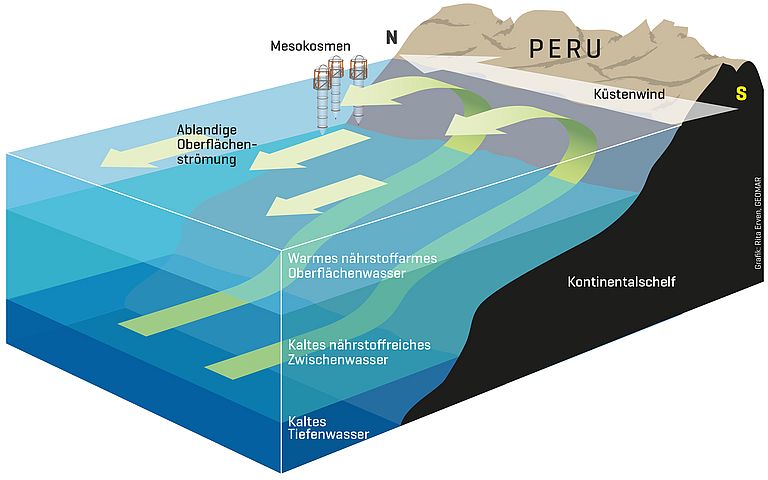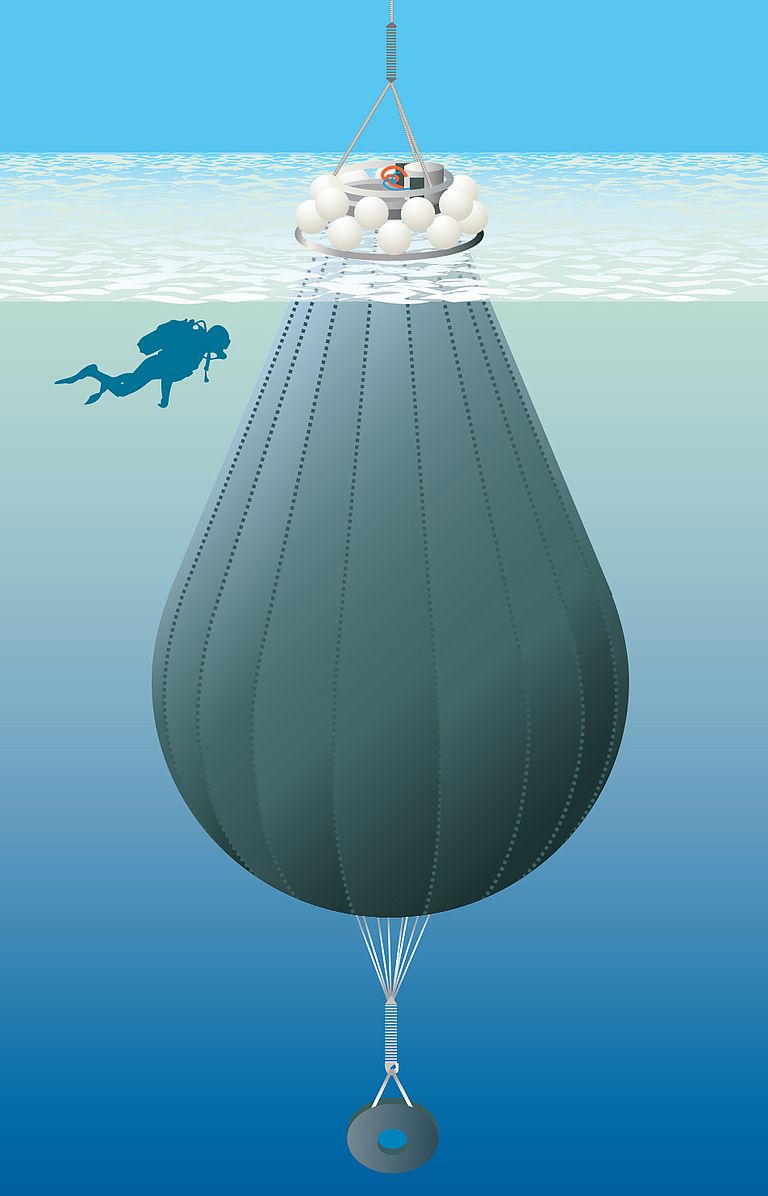Declining oxygen – is Humboldt’s nutrient boost at risk?
Experiment with the KOSMOS mesocosms in Peru
One of the ocean’s most productive areas stretches along the west coast of South America. The Humboldt Current provides the coasts of Peru and northern Chile with cold and nutrient-rich water. It ascends on the continental slope to the sun-lit surface and thus promotes the growth of plankton – which again benefits fish and other marine life. At the same time, oxygen is scarce in this region. The oxygen minimum zone expands even further as climate change alters water temperature, stratification and currents. As oxygen declines, bacteria start consuming dissolved nitrogen for their metabolic processes – the very nutrient that limits productivity in these waters. This causes productivity to drop, although the Humboldt Current provides plenty of other nutrients.
This complex system has been captured by scientists in “giant test tubes” off the coast of Peru: In an experiment with the KOSMOS mesocosms (KOSMOS: Kiel Off-Shore Mesocosms for Ocean Simulations), they monitor how the declining oxygen influences the productivity of plankton and material cycling in the upwelling region off Peru. Led by GEOMAR Helmholtz Centre for Ocean Research Kiel, a team of 23 Peruvian and 49 Chilean, Ecuadorian, Brazilian, US American, Australian, Spanish, Finnish, Austrian and German researchers has set up their base near the city of Callao. In addition to the marine research institute IMARPE (Instituto del Mar del Perú), local authorities and the Peruvian navy as well as the research vessel HUMBOLDT and the navy tug MORALES support the study, which takes place in the context of the Kiel Collaborative Research Center (SFB) 754 “Climate – Biogeochemical Interactions in the Tropical Ocean”.
With the addition of deep water, the experiment now enters the important phase: Currently, the conditions in the mesocosms resemble those directly after a natural upwelling event. “After the deployment at the end of February, we enclosed water masses containing a plankton community typical for the region and time of the year in our mesocosms”, reports Prof. Ulf Riebesell, marine biologist at GEOMAR and coordinator of the mesocosm experiments. “Now we have injected two different types of deep water: one from a slightly oxygen-deficient area and one from a very low-oxygen area, which also contains extremely little nitrogen, but larger amounts of phosphorus and iron.”
Through daily sampling and measurements, scientists observe how the productivity in the mesocosms temporarily increases before the system returns to nitrogen limitation. “We hope to learn whether the functional chain from oxygen decline to increasing nitrogen deficiency leads to an irreversible loss of productivity," explains Prof. Riebesell. "We also hope to find out whether counteracting processes such as biological nitrogen fixation can stop the downward spiral. It might be possible that nitrogen-binding bacteria provide the plankton community with the essential nutrient and thereby keep up the high productivity.”
Further insights are expected from two expeditions with the German research vessel METEOR. “In April and May, our colleagues on board will measure the same parameters in the waters off Peru as we measure in the mesocosms”, explains Prof. Riebesell. “In the mesocosms, we see the temporal development. The METEOR cruises will provide us the spatial distribution. Combining these data sets will help us to better understand the overall context.”
Based on their investigations, the researchers will be better able to predict how this highly productive marine ecosystem will develop in response to climate change. At present, about ten per cent of the world's fish catches originate from Peru. The fisheries sector is responsible for about 3.5 per cent of the Peruvian gross domestic product and employs over 80,000 people. “Obviously there is a strong interest in the region and beyond to understand how the ecosystems and elemental cycles of the Humboldt upwelling system will be developing in the future”, concludes Riebesell.
Note:
The Collaborative Research Center 754 (SFB 754) “Climate-Biogeochemical Interactions in the Tropical Ocean” was established in January 2008 as a cooperation between Kiel University, the GEOMAR Helmholtz Centre for Ocean Research Kiel and the Max Planck Institute Bremen. The SFB 754 investigates changes in the oceanic oxygen content, their possible impact on oxygen minimum zones and the consequences on the global interaction of climate and biogeochemistry in the tropical ocean. The SFB 754 is funded by the German Science Foundation (DFG) and is currently in its third phase (2016-2019).
Links:
Collaborative Research Center 754
Instituto del Mar del Perú (IMARPE)
Contact:
Maike Nicolai (GEOMAR, Communication & Media), Tel.: +49 431 600-2807, presse@geomar.de
